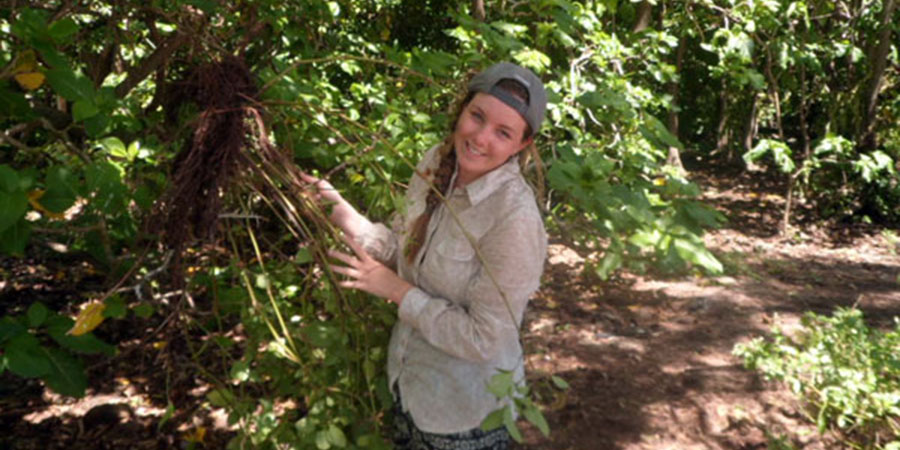
Despite being bipedal, humans have managed to reach the many corners of our globe, altering landscapes as we go. It is therefore very rare to find a site that is still in a natural state, as it would be, without human influence. Cousin Island, now looks to us as if it could be one of those rare places that managed to escape the invasion and restructuring of people, but this is not the case. The close-to-untouched appearance of Cousin Island is more as a result of an amazing recovery story.
The island was previously a coconut plantation with a resulting low native plant diversity. Once the coconut tree population was reduced, the natural vegetation was able to flourish. The island now boasts a number of indigenous species some of which are endemic to the Seychelles. However, still has a recurring invasive plant population.
The conservation team on Cousin has to remove the alien invasive plants on the Island to keep the invasive population at a controllable level, a population low enough so that it has a minimal impact on the native flora and fauna.
The team is led by April Burt, the conservation officer on the island, and is made up of 5 volunteers and 8 wardens. Sounds like a large team of people, but really, in this fight against the invasives we are incredibly outnumbered!
A morning of invasives work starts off with putting on clothes that cover as much of your body as possible in 35⁰C, high humidity conditions! This is because, being hot and sweaty seems like the lesser of two evils when one has to come into contact with the mosquito population on the island.
invasive blocks
Machetes in hand we then delve into the depths of the forest. The invasive species are ripped up, ensuring the roots aren’t left behind. Canavalia cathartica, the most common invasive species we have, causes a lot of havoc for the native species as it wraps around plants and can suffocate them. It is therefore quite a satisfying job removing these plants. The most fun however, would be chopping down the papaya trees that grow pretty tall and look thick stemmed but can be chopped down in one swing of the machete!
The invasive clearing program is one of the focal programs this year and the aim is to approach areas in blocks, allowing the team to tick off sections of the island. Despite the sweaty, mosquito-filled experience, the end result is a rewarding feeling of having aided in keeping this beautiful island as indigenous as possible, enabling the local flora and fauna to thrive.
Nicola Kuhn

